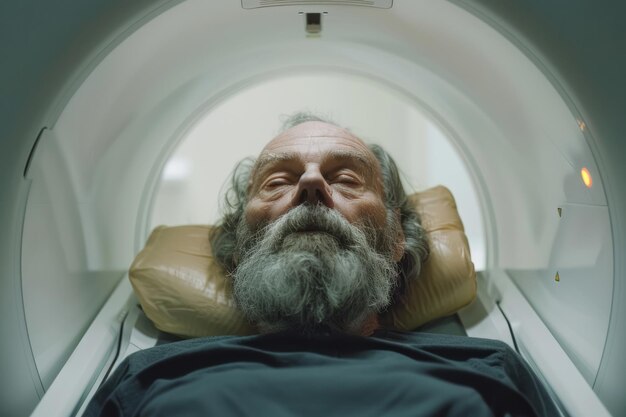Decoding the Role of MRI in Detecting Dementia: What You Need to Know
Detecting dementia early can significantly influence management approaches and quality of life for individuals and families. As technology advances, Magnetic Resonance Imaging (MRI) stands out as a powerful tool in the healthcare arsenal. But can an MRI definitively show dementia? To explore this question, let’s delve into what MRI involves, its capabilities in diagnosing dementia, and how it integrates with other diagnostic methods.
Understanding MRI and Its Functionality
What Is MRI?
MRI, or Magnetic Resonance Imaging, is a non-invasive diagnostic tool used widely in medical settings. It uses strong magnetic fields and radio waves to create detailed images of the organs and tissues in the body. Unlike X-rays or CT scans, MRI does not use ionizing radiation and is particularly effective at imaging soft tissues, making it invaluable in neurology.
How Does MRI Work?
The human body consists largely of water molecules, which contain hydrogen atoms. In an MRI scan, magnetic fields cause these atoms to align. Radiofrequency currents are then pulsed within these fields, causing the atoms to produce signals that are captured to form an image. The result is a highly detailed depiction of internal structures, particularly helpful in brain imaging.
The Brain, MRI, and Dementia
Dementia: A Brief Overview
Dementia describes a group of cognitive disorder symptoms severe enough to interfere with daily life. These symptoms can include impairments in memory, communication, and thinking. Alzheimer’s disease is the most common cause of dementia, but there are others, including vascular dementia and Lewy body dementia.
Can MRI Detect Dementia?
An MRI cannot diagnose dementia directly, but it can reveal changes in the brain's structure that are associated with different types of dementia. For example:
Atrophy: Reduction in brain size or volume is a hallmark of several types of dementia. MRI excels in visualizing this atrophy, particularly in areas like the hippocampus—crucial for memory—which shrinks in Alzheimer’s disease.
White Matter Changes: MRI is effective at detecting changes in the brain's white matter. These changes could indicate vascular dementia or other conditions affecting cognitive function.
Functional and Structural Changes: Advanced MRI techniques such as functional MRI (fMRI) and diffusion tensor imaging (DTI) can highlight functional connectivity and microstructural integrity, offering insights into how the brain is working or changing.
Role of MRI in Identifying Dementia Type
While no single test can diagnose dementia, MRI contributes valuable information about the potential type:
Alzheimer’s Disease: MRIs can reveal atrophy in the medial temporal lobe and other brain regions.
Vascular Dementia: Areas of infarcts or bleeding (from strokes) can be visualized, indicating vascular contributions to dementia.
Lewy Body Dementia: Although MRIs are less specific here, they can help rule out other types of dementia by showing brain integrity.
Combining MRI with Other Diagnostic Tools
Comprehensive Diagnostic Approach
Diagnosing dementia accurately involves a comprehensive evaluation where MRI plays a part alongside:
Neurological Exams: To assess cognitive function and identify specific impairments.
Cognitive Testing: Standardized tests measure memory, problem-solving abilities, and other cognitive functions.
Laboratory Tests: These rule out other causes of cognitive impairment, such as vitamin deficiencies or endocrine disorders.
PET Scans and CSF Analysis: These may be used in certain cases to look for biomarkers associated with Alzheimer’s and other dementias.
When Is an MRI Recommended?
Doctors might recommend an MRI when:
- There’s a rapid change in cognitive function.
- There’s a need to distinguish between types of dementia.
- Other neurological symptoms present that MRI can investigate, like seizures or headaches.
Practical Considerations for Patients and Families
Preparing for an MRI
Understanding the process of an MRI can help alleviate anxiety:
- Duration: Typically, an MRI of the brain takes 30-60 minutes.
- Comfort: MRIs can be noisy, and earplugs or headphones are often provided. Open MRI machines are available for those with claustrophobia.
- Metal: Patients will need to remove metal objects because of the MRI’s magnetic field.
After the MRI: Understanding Results
Receiving results can feel intimidating. Here are ways to interpret and act on this information:
- Consultation: Discuss findings with a neurologist or geriatric specialist who can explain MRI results in the context of symptoms.
- Care Plan: Imaging results may influence treatment or management plans, directing possible therapies or interventions.
- Monitoring: Serial MRIs may be used to monitor disease progression over time, providing insights into the effectiveness of interventions.
The Future of MRI in Dementia Diagnosis
Research continues to improve MRI technology, which in turn enhances its role in dementia diagnosis. Advances aim to:
- Increase Precision: Improving the resolution and functional imaging capabilities can help in identifying subtle changes earlier.
- Target Biomarkers: Combining MRI with other diagnostic markers could lead to earlier and more accurate diagnoses.
- Personalized Treatment Plans: Tailoring interventions based on specific imaging findings might become more prevalent, enhancing patient outcomes.
In summary, while an MRI cannot single-handedly diagnose dementia, it is a critical part of the diagnostic process. By revealing structural and functional brain changes, MRI provides essential clues that, when combined with other assessments, can help paint a clearer picture of a patient's cognitive health. As technology evolves, the hopes for earlier detection and better management of dementia only brighten.
Key Takeaways
- MRI Utility 🧠: While it cannot diagnose dementia independently, MRI provides insights into brain structure and assists in identifying dementia types.
- Dementia Indicators 🏥: Atrophy, white matter changes, and functional connectivity revealed by MRI highlight potential dementia.
- Complementary Approach 📋: MRI is part of a combined diagnostic approach, alongside cognitive tests and other assessments.
- Preparation Tips 🎧: Understanding the MRI process can help manage patient anxiety, improving the experience.
- Future Prospects 🔬: Continued advancements in MRI technology may enhance early detection and management of dementia conditions.
